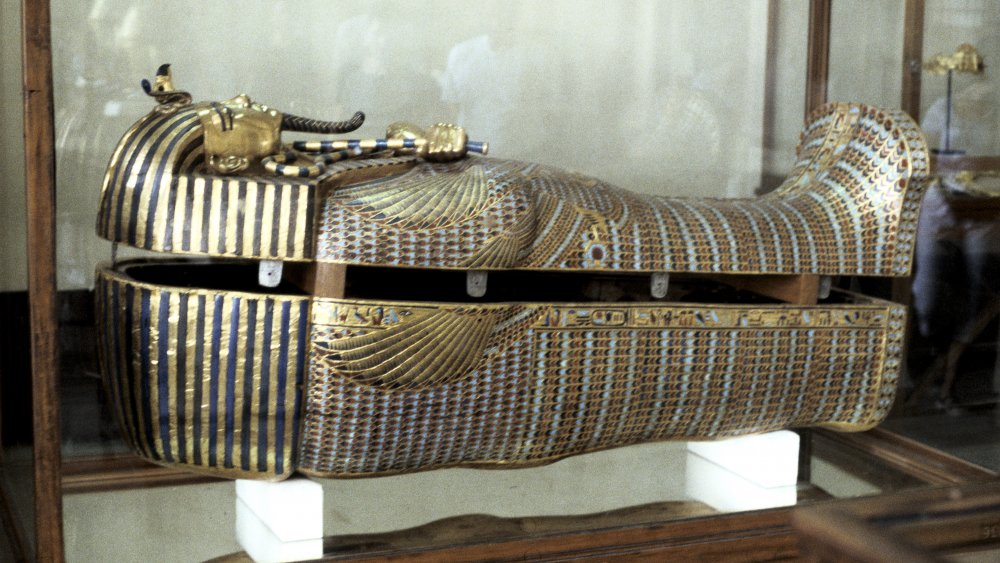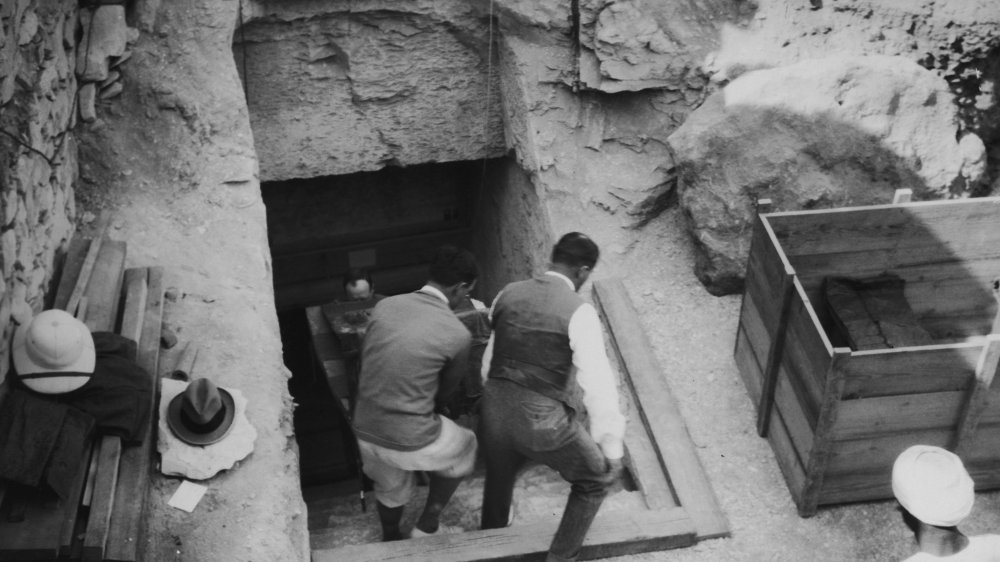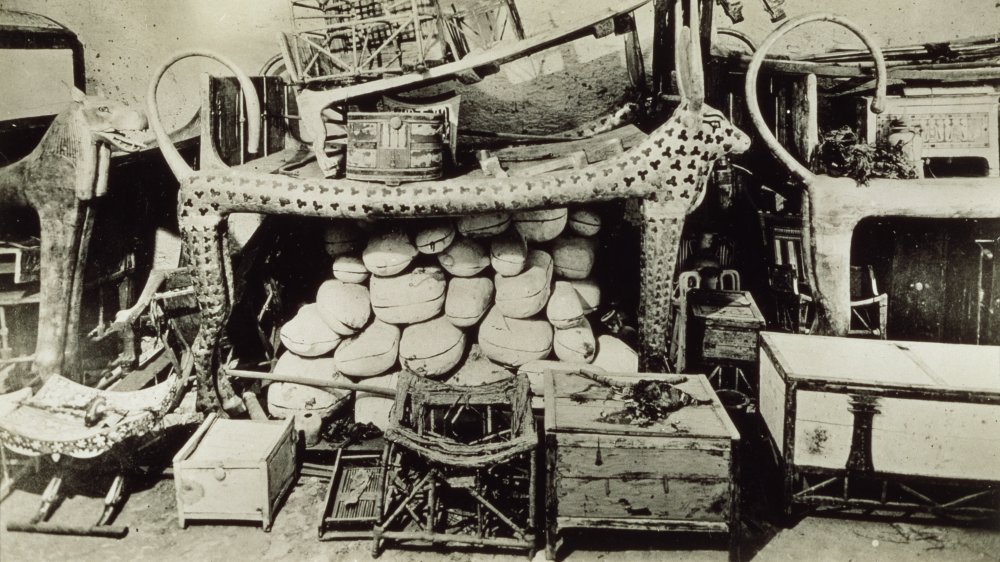The Elaborate Heists Of King Tut's Tomb
Howard Carter unsealed the tomb of King Tutankhamun — "King Tut" — in 1922. To date, the tomb is the richest ever found, which is surprising, since Tut isn't considered a major pharaoh. He died at about age 19 — barely more than a child. He ruled Egypt for about a decade, which means he got a seriously young start. All of that took place over 3,000 years ago. The tomb sat in Egypt for three millennia, full of riches, with one mummified teenage king inside.
That mummy has been around the world, displayed in a museum exhibit along with his riches — or what was left of them after a few decades of Carter and team excavating his tomb. That's the thing about old tombs. They stand for a long time and all the while, people know what sort of riches are inside. They're just begging for a good old-fashioned heist.
Howard Carter wasn't the first person to find King Tut's tomb
When Carter found Tut's tomb, he knew from the start that he wasn't the only one to have discovered it. According to Tour Egypt, there was evidence that the tomb had been entered at least twice already by grave robbers and raiders in search of the treasure that was usually buried with people as important as pharaohs. The lack of modern instruments within the ransacked tomb suggested the heist was pulled off centuries before Carter's discovery.
Judging by a patched hole that was found in the outer door of the tomb, the robbers had tunneled through. There wasn't a whole lot of space inside, so there was really only room for one individual inside the chamber at a time. This person sorted through goods and containers, selecting the finer riches and discarding the junk, then passed the treasure back through the small hole. The hole itself had been patched over from a previous restoration.
It's believed that gaining access into the main burial chamber would've taken a lot of work, perhaps a line of people passing buckets of gravel and stone. In the end, the haul was worth it: The thieves made off with around 60 percent of the treasure caskets.
Second hole, first heist
Later, a second hole was discovered, this one lower in the outer door, believed to have been the entrance for the original robbery, since it would've been made inaccessible after the second hole was carved, says Tour Egypt. This first robbery had to have taken place within the first few years following Tutankhamun's death, because the looters took things like salves, cosmetics, and linens that would've been worthless by the time of the second robbery.
These thieves didn't just take useful, everyday kingly items. They were tomb raiders, not some petty dime-store shoplifters. The original group of thieves stripped the antechamber and annex of the tomb, taking all the precious metal and metalworking they could find. It was initially believed they stripped the whole tomb, before the second group showed up decades later and were left with the annex and antechamber which clearly were robbed at different times. We now know that couldn't have been the case, since the later debris would've prevented access from the first hole. Regardless, the boy king definitely wasn't poor when he was discovered. And somewhere out there were some seriously wealthy tomb raiders.


